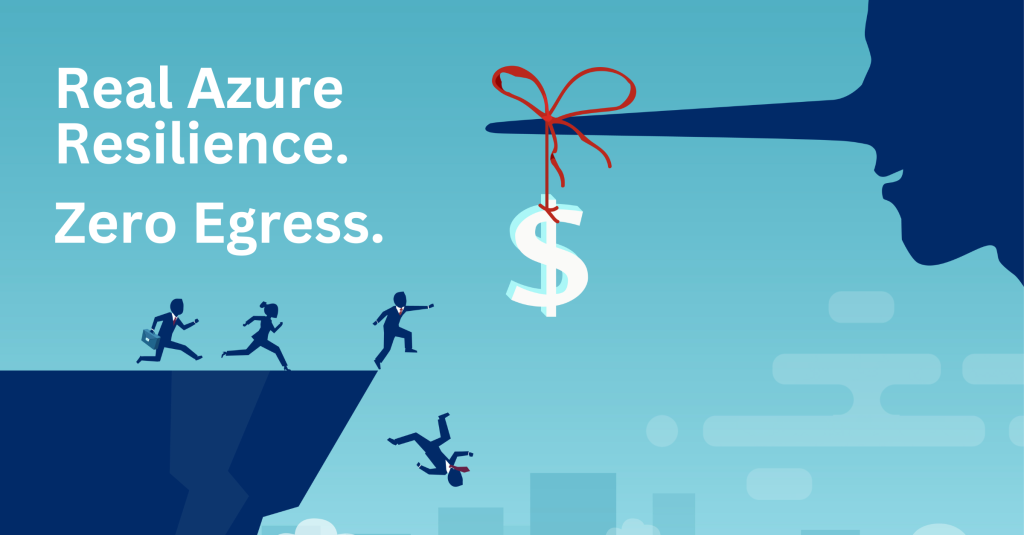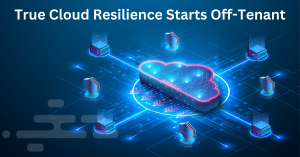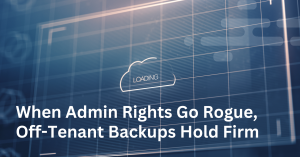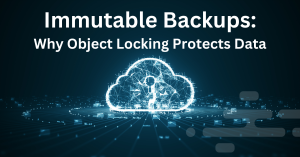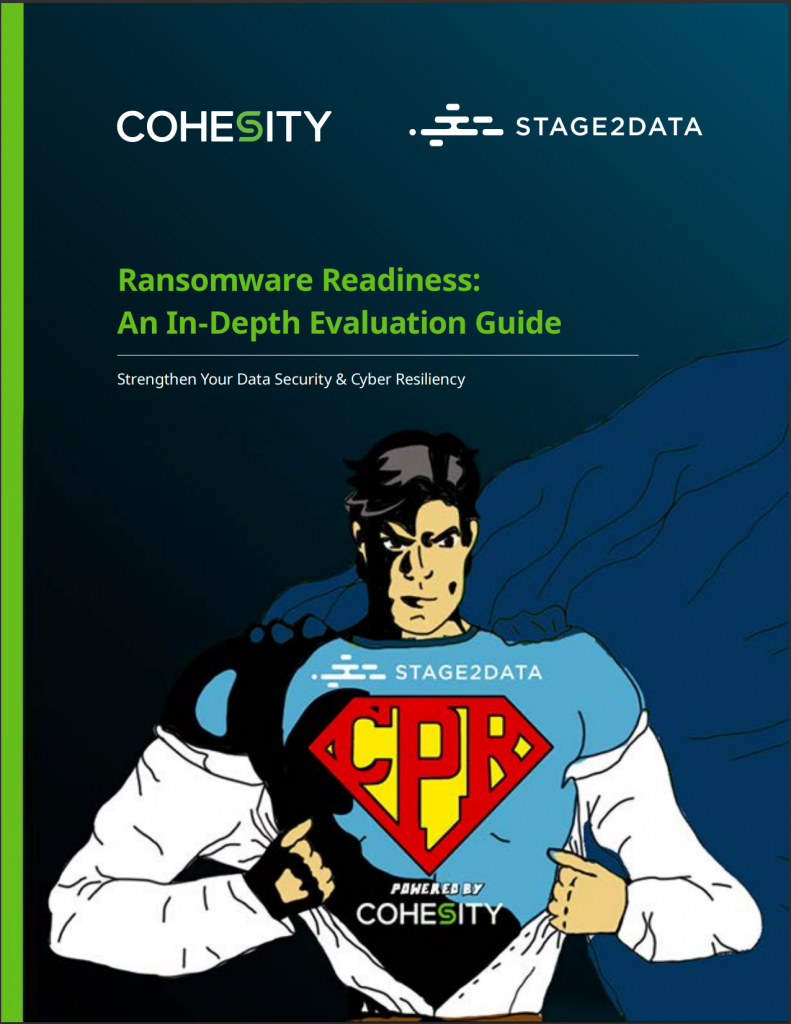You have embraced Microsoft Azure for its flexibility, scalability, and powerful services. It’s a smart move for many organizations looking to modernize their IT. As you store more data and run more applications in the cloud, you have also likely considered your disaster recovery (DR) plan.
But what happens if you need to recover massive amounts of your Azure data due to an unexpected event? You might be prepared for many aspects of recovery, but a hidden cost can catch you off guard: data egress fees. These fees, charged for transferring data out of a cloud provider’s network, can turn a stressful recovery situation into an expensive one.
This article looks at what egress fees are, how they can impact your Azure disaster recovery costs, and how you can find a more predictable, cost-effective path to getting your operations back online.
What Exactly Are Egress Fees in Cloud Computing?
In cloud computing, “egress” is the data leaving a cloud provider’s network. Cloud providers, including Microsoft Azure, often charge fees for this outbound data traffic. “Ingress,” or data entering the cloud provider’s network, is usually free or much cheaper.
Why do these charges exist? Cloud providers maintain vast, high-speed networks to connect their global data centers and to connect you to your services. Moving data across these networks, particularly out to the public internet or different regions, incurs costs for the provider. Egress fees are a way for them to cover these operational expenses for network bandwidth.
You might encounter egress fees in various everyday scenarios, such as:
- Downloading large files from Azure storage to your local computers.
- Transferring data from Azure to an on-premises data center.
- Replicating data from Azure to another cloud provider or a different geographic region (though inter-region fees can sometimes be lower than internet egress).
For routine operations with small data transfers, these fees might be negligible, a minor line item in your monthly bill. However, during a large-scale disaster recovery operation, the volume of data being transferred out of Azure can skyrocket. This is when egress fees can transform from a small operational cost into a significant financial burden.
The Disaster Recovery Scenario: When Egress Fees Can Inflict Financial Pain
Imagine this situation: your organization experiences a major disruption – perhaps a regional Azure outage, a cyber attack that compromised your system, or a human error – affecting your Azure services. Your top priority is to get your critical applications and data back online as quickly as possible to minimize downtime and business impact.
Your disaster recovery plan might involve restoring terabytes (TB) (or even petabytes (PB)) of data. This could include:
- Full backups of your application servers.
- Extensive databases.
- Large file shares and archives.
- Critical operational data needed to resume business.
Even so, if your recovery strategy involves pulling this data out of your primary Azure region – perhaps to your own data center, to another cloud, or even just to a different, unaffected Azure region for rebuilding – you will likely face egress fees for every gigabyte transferred.
Consider this hypothetical example. Suppose you need to recover 50 TB of data from Azure. Azure’s egress fees vary by region and the amount of data transferred, but let us use a sample rate. If the fee is, for instance, around $0.08 per GB for a substantial amount of data (rates can change, so always check current pricing), recovering 50 TB (which is approximately 51,200 GB) could cost:
51,200 GB x $0.08/GB = $4,096
This might not seem enormous for a large enterprise, but what if you need to recover 200 TB? That would be $16,384. What if it is 1 PB? The costs escalate rapidly.
For some organizations, these unexpected charges can be a serious financial hit, arriving at a time when the business is already dealing with the costs and stress of the disaster or disruption itself. This is a far cry from a solution that is designed to be both straightforward and economical.
The Challenge: Balancing Recovery Needs with Unpredictable Costs
When a disaster strikes, your primary concern is restoring service and data. You need your recovery process to be swift, complete, and reliable. The last thing you want is to hesitate or compromise on what data to recover because you are worried about a massive, unbudgeted bill for egress fees.
And this “bill shock” is a genuine concern. The unpredictability of egress fees in a DR scenario can make it difficult to budget accurately for disaster recovery. It can also lead to undesirable decisions:
- Delayed Recovery: Teams might spend precious time trying to estimate or minimize egress costs instead of focusing purely on recovery speed.
- Incomplete Recovery: To save money, an organization might choose to recover only a subset of its data, potentially leading to a degraded service or loss of important information.
- Under-tested DR Plans: If testing a DR plan incurs significant egress fees, organizations might test less frequently or less thoroughly than they should, leaving them unprepared for a real event.
Your data is not safe just because it is in Azure. If recovery costs become prohibitive, the safety of that data is compromised in a practical sense.
A Cost-Effective Solution: Off-Tenant DRaaS Without Egress Fees
Fortunately, there is a way to achieve robust disaster recovery for your Azure environment without the sting of unpredictable egress fees. Many Disaster Recovery-as-a-Service (DRaaS) providers offer solutions specifically designed to make recovery more predictable and affordable.
An off-tenant DRaaS solution, like the one offered by Stage2Data, can be a major advantage here. The key is that your data is backed up outside your Azure tenant to a separate, dedicated recovery environment. When it is time to recover, especially in a scenario where your primary Azure tenant might be inaccessible or compromised, this separation is invaluable.
Crucially, some DRaaS providers architect their services to eliminate egress fees during recovery. How do they achieve this? Let’s look at Stage2Data’s model:
- Recovery in the DRaaS Provider’s Cloud: We recover your systems and data within our own cloud infrastructure. Because your data is already resident in our environment (from the off-tenant backups), there are no egress fees from Azure to initiate this recovery. Your services are seamlessly brought online in our own cloud environment.
- Optimized Network Connections: We use direct network connections or special peering arrangements that reduce or eliminate data transfer costs for our customers.
- Predictable Pricing Models: Our pricing model clearly outlines the costs and tiered service plans make your DR costs much more predictable. The aim is to provide a comprehensive backup and DRaaS solution that is designed to be both straightforward and economical—making true resilience accessible without surprise costs.
At Stage2Data, we emphasize “no egress fees”. This means you can get cost-effective recovery because our solution eliminates the high costs associated with data transfer fees during an outage. This approach directly addresses the financial unpredictability that can otherwise plague Azure DR strategies. And it ensures continuous data protection without a single point of failure.
Beyond Cost Savings: The Full Value of Egress-Free DR
Eliminating egress fees is a significant financial benefit, but its value extends even further:
- Faster Decision-Making: During a crisis, you can authorize recovery actions without worrying about escalating data transfer costs.
- More Comprehensive Recovery: You are more likely to recover all necessary data, not just a subset, ensuring a more complete return to operations.
- Simplified Budgeting: DR costs become a predictable operational expense rather than a volatile variable.
- Increased Confidence: Knowing that your DR plan is financially sound provides greater peace of mind.
This holistic approach helps you improve your cloud strategy and hedge against risk.
Calculating Your Potential Risk and Savings
To understand what egress fees might mean for your organization, consider the following:
- Estimate the total volume of data for your critical Azure-based applications and systems that would need to be recovered in a disaster.
- Research Azure’s current data transfer (egress) pricing for your region(s) and for the volumes you anticipate. Remember that these can be tiered and complex.
- Multiply your data volume by the applicable rate to get a rough estimate of potential egress costs in a recovery scenario.
Comparing this potential cost against the predictable pricing of an egress-free DRaaS solution can be an eye-opening exercise. It allows you to see the potential savings and the value of financial predictability in your DR planning.
Secure Your Recovery, Not Your Bill
Moving to Azure offers many advantages, but it also introduces new cost considerations, like egress fees during disaster recovery. These unexpected charges can undermine even well-intentioned DR plans, adding financial insult to operational injury.
By choosing an off-tenant DRaaS solution that explicitly eliminates egress fees for recovery, you can protect your Azure data and ensure that your organization can bounce back from a disaster without facing an unexpectedly large bill. It is about making your data protection as robust and adaptable as your business demands, ensuring that when you need your data most, cost is not a barrier to recovery.

